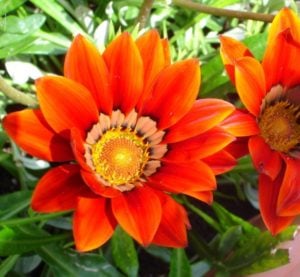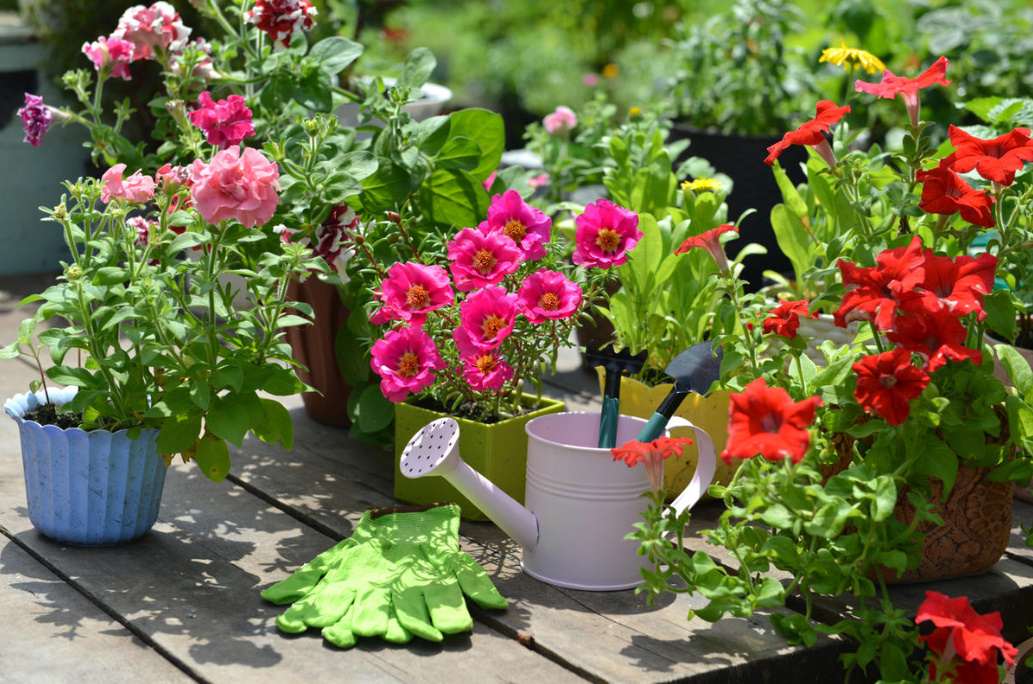
Let me clarify right away: we are talking about continuous flowering (and not about long or repeated). That is, when the first bud blooms in May or June, and the last one destroys the autumn frost. There are many such flowers, but I will tell you only about those that I personally grew.
Why only about them? I’ll explain now. Continuous flowering is a weighty argument in favor of a particular plant, you will agree. But sellers of planting material often deceive, endowing various types with non-existent advantages. When I was looking for flowers that would decorate my flowerbed from summer to late autumn, I was persistently offered either long- or repeat-blooming. I could not be fooled, but after all, someone will buy and sow – and hope for continuous flowering … in vain.
And I decided to make a feasible contribution to the restoration of the truth: to tell about the colors that will actually delight you with bright colors all summer and autumn. Checked!
1. Gazania
If you want a beautiful flower bed, but you can’t devote much time to care, Gazania is your plant. I prefer to buy already blooming seedlings: it is not yet known what will grow from the seeds, but everything is already clear both with the color and with the structure (simple or double) of the flower.
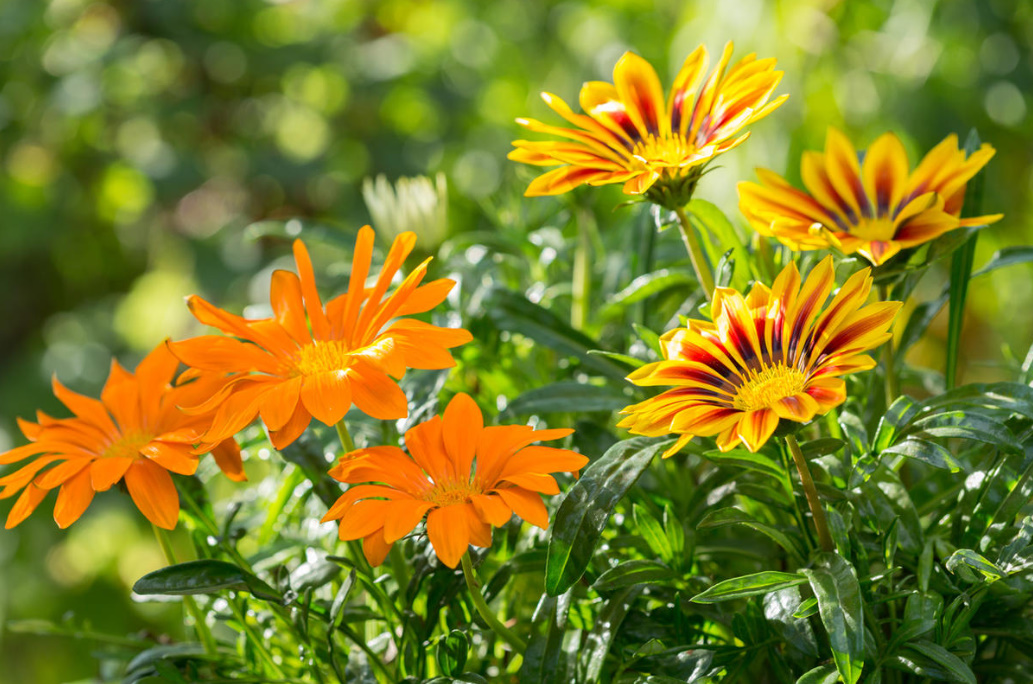
Amazingly unpretentious and tenacious! I had a wonderful growth and continuously bloomed on poor soil without a single top dressing, only with watering. Prefers the sun, but you can put it in partial shade.
I plant seedlings in the open ground in early May or even late April (gazania easily tolerates short frosts up to -5 … -7 ° C), and until October-November my flower beds are decorated with bright “daisies”. By the way, the leaves are also beautiful — bright green, narrow, keep decorative all summer (die off — units!).
No pests were noticed, diseases also bypass Gazania side. Withstands heat and lack of moisture, and continues to bloom! True, it is not as abundant as in favorable conditions, but still … regular watering and fertilizing responds with a whole cap of flowers — the leaves are not visible!
Gazanias are perennial plants, although they are usually grown as annuals. But if you wish, you can save the desired specimen. I tried — it worked.
2. Marigolds
I guess the marigolds (Tagetes) don’t need an introduction. They are grown as annuals, although there are also perennial species. They definitely should be settled on the site — if not for beauty, then for the sake of unique useful properties.

It is advisable to plant them in a sunny place, partial shade is acceptable. They almost didn’t bloom in my shade, although they grew more greenery than in the sun.
With the landing in the open ground, take your time, wait for the return frosts to pass. Somehow my seedlings got not even under minus, but under a simple decrease in temperature (+2 … +5 ° C). The marigolds were so afraid of the cold snap that they froze in growth forever. They didn’t die, but they didn’t recover in a month. I had to send them to the compost and firmly remember: marigolds should be planted only after the onset of steady heat!
As soon as the flowers begin to fade, I immediately remove them, and the view is neater, and the plant does not need to waste energy on tying seeds. When there is no rain for a long time, I water it, once or twice a season I can (but not necessarily) feed it with a complex mineral fertilizer. No diseases were ever noticed, pests were affected only once: in a dry hot summer, a spider mite came.
3. Catharanthus roseus
I fell in love with him at first sight, not even knowing that he blooms all summer. Compact shrub, beautiful shiny leaves, cute delicate flowers — Catharanthus roseus can be admired endlessly!
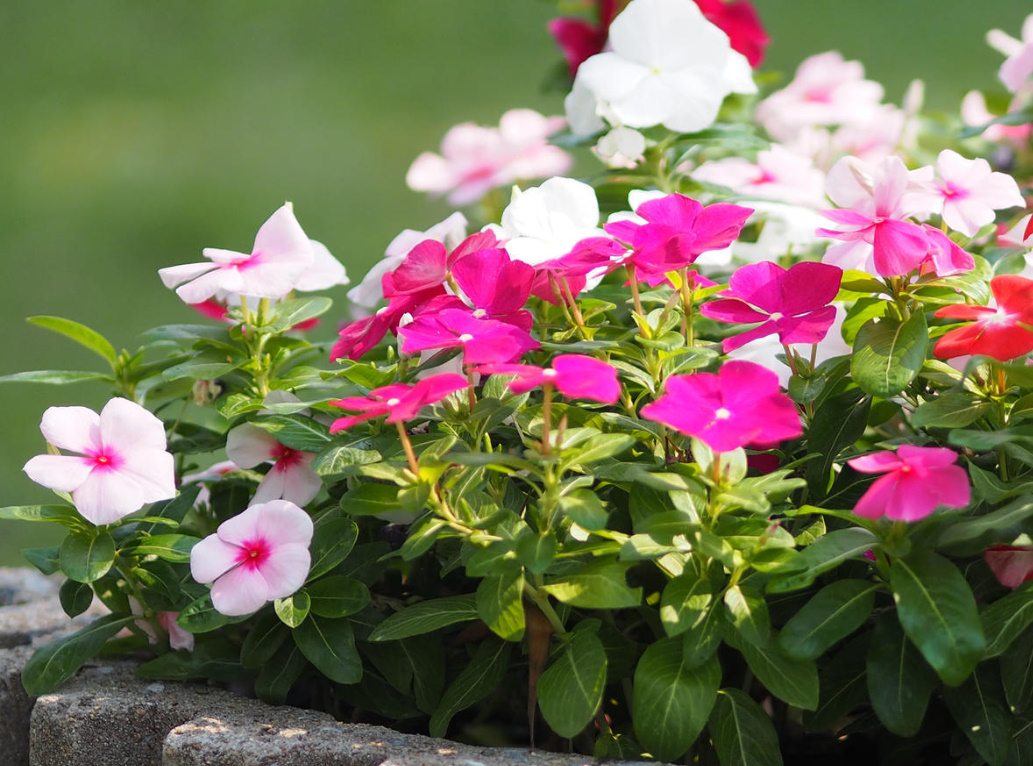
Amazingly tenacious! It is demanding of soil moisture, but withstands short—term periods of drought (the results of a forced strength test are 9 days at a daytime temperature of +32 ° C without a single watering!) without loss of decorativeness. One of the few species that can be grown in hanging planters in my climatic conditions. It blooms well without fertilizing, but I fertilize with a microdose of mineral complexes with each watering, and there are more flowers, and the color of the petals is brighter. I didn’t get sick with anything, there were no pests either.
Pruning is not necessary: the shoots at the base are not exposed, the bush does not fall apart, it remains a compact “umbrella” all the time, smooth, as if it was formed. Another wonderful quality of the cataranthus is self—cleaning flowers (that is, you do not need to remove them, faded ones fall off on their own).
Catharanthus roseus is an evergreen perennial semi—shrub, grown as an annual. It reproduces well by self-seeding, but seedlings need to be protected from recurrent frosts.
When planting seedlings, place the plants at a distance of about 30-35 cm from each other. The first time, trying to make a tight fit, I left about 10 cm between the Catharanthus. Definitely not enough, because after two weeks it became obvious: such a close neighborhood is clearly not good for plants.
4. Matthiola incana
He happened to be in my flower bed because I don’t like his scent. But the sister brought — where to go, planted. And I didn’t regret it! Bright “candles” of this plant decorated the flower bed until late autumn. It’s just a pity that there was only one seedling: as a group, I think, Matthiola incana would have looked much more spectacular!
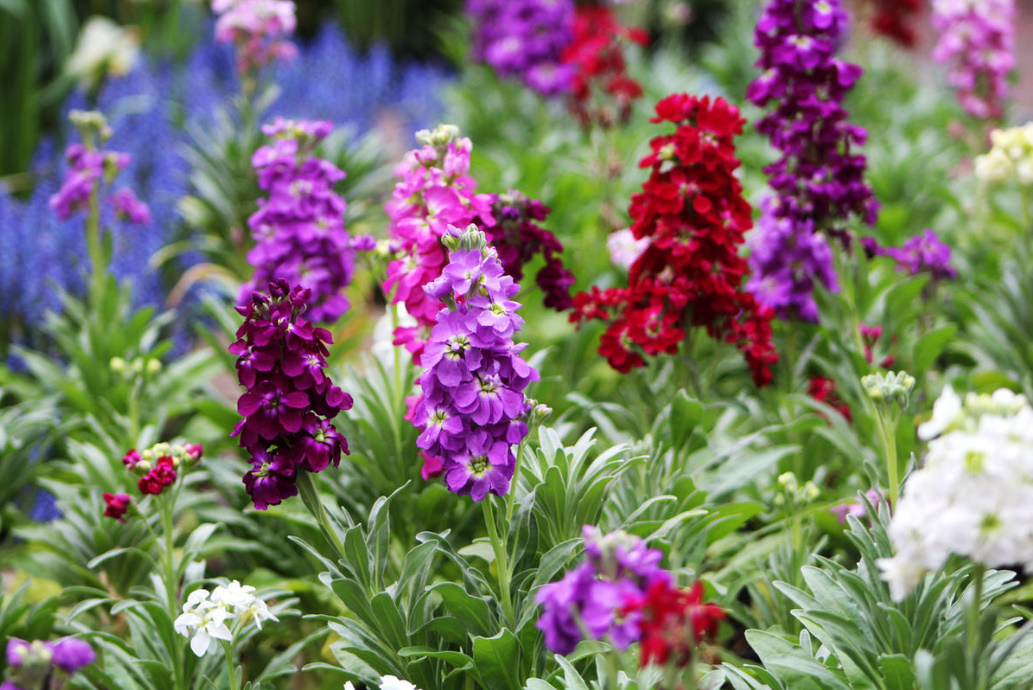
Despite the popular opinion that this plant is capricious, Matthiola incana did not give me any trouble. Watering, fertilizing once a week, pruning of withered inflorescences is a standard set of care work. Diseases and pests were not noticed.
The only negative (perhaps due to climatic conditions) is that the leaves at the base were constantly drying up, as a result of which by autumn my pet became “bare-legged”. But I forgave him this flaw, too, because he bloomed like crazy! The first night frosts (up to -5°C) they did not harm him, and only a more serious cold snap killed the stubborn gray-haired handsome man, still blooming. It is grown as an annual, although there are also perennial species.
5. Mirabilis jalapa
A thermophilic perennial, dying from the first frosts. Perhaps because of the impressive size of an adult plant (1-1.2 m in height and the same in width), Mirabilis jalapa is not often seen in suburban flower beds.
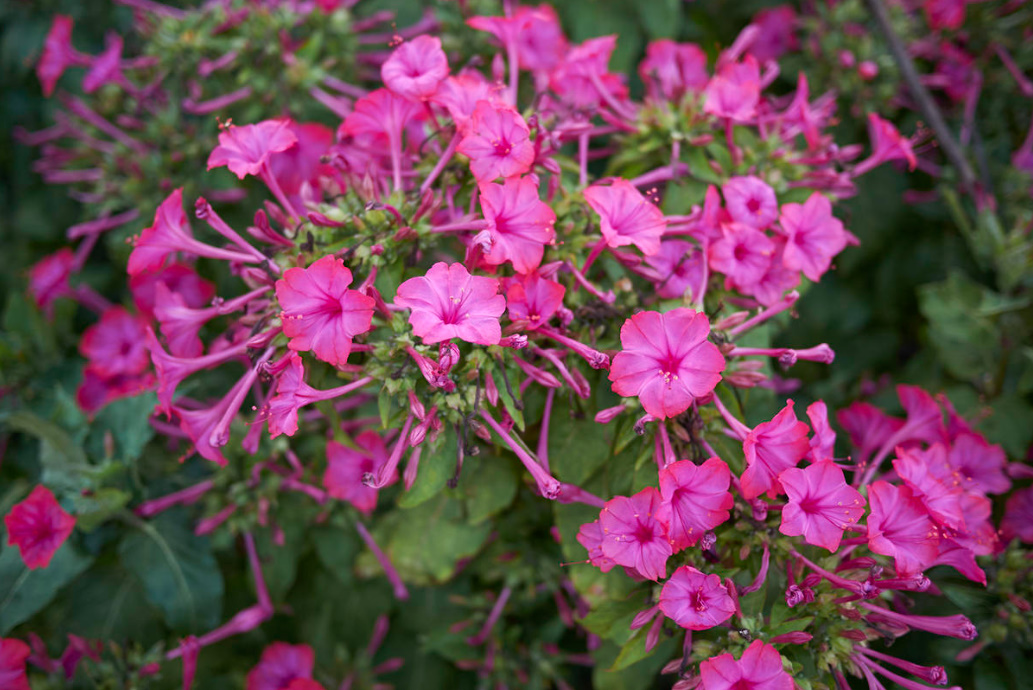
But if you can find a place for him, you won’t regret it! Small bright gramophones will bloom tirelessly until late autumn. If you pour it, well, no, mirabilis will not be offended: he knows how to store enough moisture in the tuberous roots. With regard to fertilizers, it is worth adhering to the principle “it is better to underfeed than overfeed”.
In my opinion, mirabilis is undeservedly deprived of the attention of gardeners, because its advantages are innumerable: it reproduces by self-seeding, grows without care (except that weeds are weeded out around), diseases and pests do not bother it, pruning is not needed. During flowering, it is stunningly beautiful — plus in the evening and at night it is surrounded by a fleur of a subtle, unobtrusive fragrance. Well, tell me, isn’t this an ideal candidate for a place in the flower garden?


